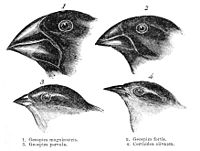
Photo from wikipedia
Nowadays, enzymatic synthesis of nucleotides is an efficient and sustainable alternative to chemical methodologies. In this regard, after the biochemical characterization of wild-type and mutant uracil phosphoribosyltransferases from Toxoplasma gondii… Click to show full abstract
Nowadays, enzymatic synthesis of nucleotides is an efficient and sustainable alternative to chemical methodologies. In this regard, after the biochemical characterization of wild-type and mutant uracil phosphoribosyltransferases from Toxoplasma gondii (TgUPRT, TgUPRT2, and TgUPRT3), TgUPRT2 was selected as the optimal candidate (69.5 IU mg-1, UMP synthesis) for structure-guided immobilization onto Ni2+ chelate (MNiUPRT2) and onto glutaraldehyde-activated microparticles (MGlUPRT2). Among resulting derivatives, MNiUPRT23 (6127 IU g-1biocat; 92% retained activity; 3-5 fold enhanced stability at 50-60 °C) and MGlUPRT2N (3711 IU g-1biocat; 27% retained activity; 8-20 fold enhanced stability at 50-60 °C) displayed the best operability. Moreover, the enzymatic synthesis of different pyrimidine NMPs was performed. Finally, the reusability of both derivatives in 5-FUMP synthesis (MNiUPRT23, 80% retained activity after 7 cycles, 5 min; MGlUPRT2N, 70% retained activity after 10 cycles, 20 min) was carried out at short times.
Journal Title: Bioresource technology
Year Published: 2021
Link to full text (if available)
Share on Social Media: Sign Up to like & get
recommendations!